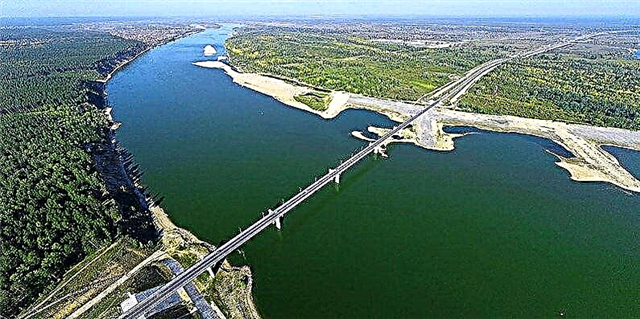
The first pavements appeared during the time of the Hittite kingdom, Assyria, the Achaemenid Empire and further in the Roman Empire. This greatly influenced trade, the ability to move its own troops, thereby strengthening the economy and enhancing the country's security. But with the advent of heavy road transport, stone roads became unusable and gradually collapsed under the influence of wheels. For this reason, the stones began to be replaced with a more stable asphalt covering made from petrochemicals.
As a result, today you can see high-quality sustainable roads that do not need constant maintenance. And every time you step along the road or drive, you ask yourself the question: so how is asphalt made?
Interesting fact: in ancient Greece and Babylon, oil clots were used as building material. It was added to the composition of cement to increase the strength and impact resistance of future walls.
What is asphalt made of?

For the production of asphalt, granite or volcanic crushed stone, minerals, bitumen and sand are purchased. After entering the plant, they are loaded into special drying apparatus. In a rotating drum, the operator through a conveyor belt feeds separately sand and gravel. At the end of the installation there is a gas or diesel burner that heats the walls of the drum.

Thus, the inside components of the future asphalt are dried inside.For drying, they can also use a unit with electric heating. At the end of the process, crushed stone and sand are sent for cleaning to a drum unit called “Roar”.

During cleaning, the components pass through grates and filters, are screened out of debris, foreign matter, large and small stones. After processing, they are loaded into the hopper. In these silos, the components save the right amount of time until the next step. Using computer remote control and electric shutters, it is possible to measure the required amount of ingredients for the production of different types of asphalt.
Bitumen preparation

Bitumen is produced in specialized factories, and it is delivered ready-made for the production of asphalt. It is placed in large-sized tank-boilers with electric heating, where it is gradually heated to a temperature of 110 - 120 ° С. Before production, it is transferred to another boiler, where it is melted to a working temperature of 150 ° C. Bitumen is the result of petrochemical production, therefore, when it is heated, safety procedures are strictly observed. At a temperature of 150 - 160 ° C, it can ignite and cause a long fire.
Asphalt production

The prepared components enter a special hopper, from which they enter a mixing apparatus via a conveyor belt. Due to its specific properties, bitumen is delivered separately by pipeline. Sometimes, to maintain the temperature, the pipeline is equipped with an insulation coating or heating system.

A stabilizing cellulose additive is added to some types of asphalt to increase its strength. All toxic fumes are vented by a ventilation system with installed filters for cleaning polluted air. All production control takes place remotely from a computerized control panel.
Interesting fact: The first asphalt road appeared in England in the 1830s. Then it was first used for the sidewalks of the Royal Bridge in Paris.
All components are mixed during rotation in a heated drum. Under the influence of rotational movements and high temperature, asphalt is fully mixed, until the required properties and consistency are obtained.
Production completion
The finished product enters the container, where a small part is taken for testing control. Samples are checked for strength under the influence of the pressure of the press and inspect its composition. After passing through the quality control department, asphalt is sent hot to the construction of roads with special trucks.
Ready asphalt will delight everyone who is driving on it or walking. Its hard and shock-absorbing surface will preserve more than one pair of legs and wheels.












